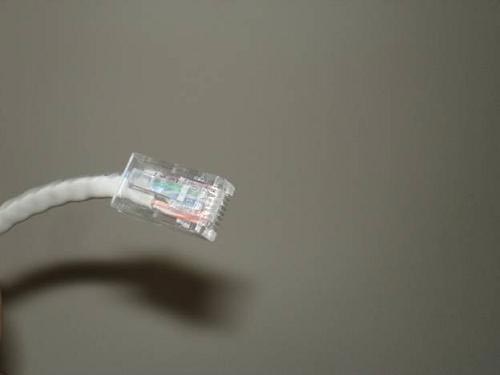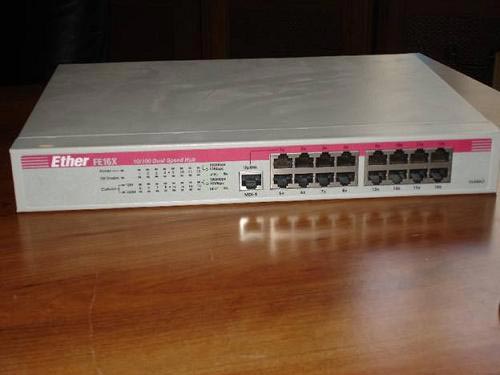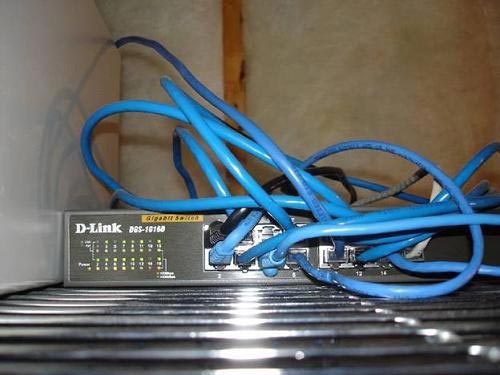Network basics: Part 1 - Network hardware devices
Brien M. Posey
In this series we will begin completely with the basic content of computer networks and aim to build a practical network. The beginning is some discussion about a number of different network components and their functions.
You have seen many articles aimed at administrators who have at least some experience. But here will only be the most basic parts aimed at people who are new to the network. In this first lesson we will discuss a number of different network devices and their ability to do what they do.
Network Adapter (Network Adapter)
The first component to mention among network hardware devices is the network adapter. This device is also known by different names such as network card (network card), Network Interface Card (network interface card), and NIC. All are general terms of the same hardware device. The job of the network card is to physically mount a computer so that it can participate in the communication activity in that network.
The first thing you need to know when talking about network cards is that it must be paired with the network medium. The network medium is the type of cable used on the network. Wireless networks are another area and will be discussed in detail in a separate article later.
For network cards to match the network medium is a real problem because they require a large number of mandatory competition standards. For example, before building a network and starting to buy network cards and cables, you have to decide whether to use Ethernet, Coaxial Ethernet, Token Ring, Arcnet or any other network standard. Each network standard has its own length and disadvantages. It's important to figure out which one is best suited for your organization.
Today, most of the network technologies mentioned above quickly become oblivious. Now there is only one type of network that uses a wired connection that is also used in small and medium businesses, Ethernet. You can see the illustration of the Ethernet network card in the figure A example below.

Figure 1 : Ethernet card
Modern Ethernet networks all use 8-wire twisted pair cables. The wires are arranged in a special order and the RJ-45 connector is attached to the cable end. RJ-45 cables look like connectors at the end of a phone cord, but larger. Telephone wires use an RJ-11 connector, which is in contrast to the RJ-45 connector used in Ethernet cables. You can see for example an Ethernet cable with an RJ-45 connector in Figure B.

Figure 2 : Ethernet cable with an RJ-45 connector
Hub and Switch
As you saw above, the computer uses a network card to send and receive data. Data is transmitted via Ethernet cable. However, usually you can't just run an Ethernet cable between two PCs to call it a network.
With the age of today's high-speed Internet access, you probably hear the term "broadband". Broadband is the type of network in which data is sent and received over the same wire, and in Ethernet, Baseband communication is used. Baseband uses separate strings for sending and receiving data. This means that if a computer is sending data over a specific wire inside an Ethernet cable, the computer receiving the data needs another wire to be redirected to its receiving port.
You can build networks for two computers in this way that people often call crossover cables. A crossover cable is simply a network cable that has wires sent and received opposite each other at one end so that computers can be linked directly to each other.
The problem with using a crossover cable is that you cannot add or remove another computer other than the two connected computers. So better than crossover cables, most networks use conventional Ethernet cables without the sending and receiving wires at the end of the connector.
Of course, the sending and receiving wires must be reversed at some point in order for the communication process to be successful. This is the job of a hub or switch. Hubs are also becoming obsolete but we should still talk about them. Understanding hubs will make it much easier to talk about switches.
There are a number of different hubs, but usually speaking of hubs refers to a box with a bundle of RJ-45 ports. Each computer on the network will be connected to a hub via an Ethernet cable. You can see a hub shaped like in Figure C.

Figure 3 : Hub is a device that acts as a central connection point for computers on a network.
Hub has two different tasks. The first task is to provide a central connection point for all computers in the network. Every computer is plugged into a hub. Multi-port hubs can be set together if necessary to provide more computers.
Another task of hubs is to arrange ports in such a way that if a computer carries out data transmission, that data must be sent over the receiver of another computer.
You might be wondering right now, how can data reach the right destination if more than two computers are connected to a hub? The secret lies in the network card. Each Ethernet card is provided with a unique MAC (Media Access Control) physical address. When a computer in an Ethernet network transmits data across a network that has PCs connected to a hub, the data is actually sent to every computer on the network. All computers receive data, then compare the destination address with its MAC physical address. If it matches, the computer will know that it is the data recipient, otherwise it will ignore the data.
As you can see, when a computer is connected via a hub, all packets are sent to all computers on the network. The problem is that any computer can send information at any time. Have you ever seen a meeting in which all participants started speaking at the same time? The problem with this type of network is that.
When a computer needs to transmit data, it checks to see if another computer is sending information at the same time. If the transmission line is idle, it transmits the necessary data. If there is already another machine using the transmission, the packets of data being transferred over the wire will be in conflict and destroyed (this is why this type of network is sometimes called the impulse domain. suddenly). Both computers will then have to wait for a random amount of time and try to retransmit their destroyed packets.
The increasing number of computers on domain names has increased the number of conflicts. Due to the increasing number of conflicts, the effectiveness of the network is decreasing. That's why the switch has almost replaced all hubs now.
A switch (you can see in Figure D), performs all the same tasks as a hub. The only difference is that, when a PC on the network needs to communicate with another computer, the switch will use a set of internal logical channels to establish a separate logical path between the two computers. That means two computers are completely free to communicate with each other without having to worry about conflict.

Figure 4 : Switch looks exactly like a hub but works much differently.
Switches really improve the efficiency of the network. Because they eliminate conflict and much more, they can set up parallel communication paths. For example, when computer A is communicating with computer B, there is no reason for computer C to not communicate with the computer at the same time. In a collision domain, parallel communication types This is impossible because they will lead to conflict.
Conclude
In this article we discussed some basic components for creating a simple network. In the second part, we will continue to be interested in basic network hardware devices. Please continue to look forward to the following.
You should read it
- Calloc () function in C
- Korea's supply chain faces unprecedented chaos due to the Covid-19 pandemic
- New trend of global technology supply chain: 'Not Made in China'
- How to fix 'The disk selected has an MBR partition table' when installing Windows
- It is not Intel, Samsung or Apple, Google, the little-known Dutch company that is the sole monopoly of the most important role in the global technology supply chain.
- Nikkei: Apple considers delaying the release of the iPhone 12 due to the corona virus effect
- Which country is STIHL chain saw? Is that good?
- 4 things to note before choosing to buy a PSU power supply for a PC
May be interested
- Network basics: Part 12 - User account management
 in the previous part of this article series, i talked about the active directory users and computers console. although in that section introduced how to connect to the domain selected by this interface, there is a problem
in the previous part of this article series, i talked about the active directory users and computers console. although in that section introduced how to connect to the domain selected by this interface, there is a problem - Network basics: Part 20 - File level permissions
 in the previous part of this series, we introduced shared folders that can be protected using share level permissions or ntfs permissions.
in the previous part of this series, we introduced shared folders that can be protected using share level permissions or ntfs permissions. - Computer hardware test - Part 1
 in the article below, network administrator will go with you to learn about your computer's hardware through extremely interesting multiple-choice questions so you can test your knowledge. let's start.
in the article below, network administrator will go with you to learn about your computer's hardware through extremely interesting multiple-choice questions so you can test your knowledge. let's start. - Local area network - LAN: Reference model OSI - Part IV
 in the past, in the 1980s, the need to use the network exploded in the world in terms of the number and size of the network. but each network is designed and developed by a different manufacturer of hardware and software, which leads to the situation that networks are not compatible with each other and that networks from different manufacturers are not able to contact. together
in the past, in the 1980s, the need to use the network exploded in the world in terms of the number and size of the network. but each network is designed and developed by a different manufacturer of hardware and software, which leads to the situation that networks are not compatible with each other and that networks from different manufacturers are not able to contact. together - IP, Subnet mask, installation and configuration for 1 server
 ip address is a unique number assigned to a device in a network - these devices can be a computer, a router, a network printer (network printer with a network card), etc. etc. this type of address is called a software address - it is different from the address address hardware address - or we know as the mac address of the network card or hard-code in some network devices - please say a little about this address - every network card manufacturer in the world before production must apply for a batch of mac addresses from inte
ip address is a unique number assigned to a device in a network - these devices can be a computer, a router, a network printer (network printer with a network card), etc. etc. this type of address is called a software address - it is different from the address address hardware address - or we know as the mac address of the network card or hard-code in some network devices - please say a little about this address - every network card manufacturer in the world before production must apply for a batch of mac addresses from inte - Key differences between hardware VPN and software VPN
 vpns are used to connect remote users to a secure network over the public internet. it is commonly used in corporate or corporate environments to allow employees to securely connect to a company's internal network from the outside.
vpns are used to connect remote users to a secure network over the public internet. it is commonly used in corporate or corporate environments to allow employees to securely connect to a company's internal network from the outside. - 7 rules to remember when naming hardware devices
 using the right device name can have many positive benefits, make it more productive, or bring interest. here are seven rules to keep in mind when naming hardware devices.
using the right device name can have many positive benefits, make it more productive, or bring interest. here are seven rules to keep in mind when naming hardware devices. - Local area network - LAN: Devices - Part III
 hub - also called multiport repeater, it functions exactly like the repeater but has multiple ports to connect to other devices. the common hub has 4,8,12 and 4 ports and is the center of the star network. there are usually the following hub types
hub - also called multiport repeater, it functions exactly like the repeater but has multiple ports to connect to other devices. the common hub has 4,8,12 and 4 ports and is the center of the star network. there are usually the following hub types - Networking Basics: Part 15 - Universal Groups & Group Nesting
 in the previous part of this series, we introduced the concept of using groups to manage network access, followed by allowing permissions directly to users. we have also explained
in the previous part of this series, we introduced the concept of using groups to manage network access, followed by allowing permissions directly to users. we have also explained - Network knowledge: WAN hardware
 the wan hardware you use depends on the wan service you want to connect to. each wan protocol has different specifications and requirements for hardware and transmission media. however, with your choice, there are many hardware that can be compatible with many different wan services.
the wan hardware you use depends on the wan service you want to connect to. each wan protocol has different specifications and requirements for hardware and transmission media. however, with your choice, there are many hardware that can be compatible with many different wan services.










 Wireless standards are highly appreciated today
Wireless standards are highly appreciated today Balance downloading Web-Proxy Client with ISA Server 2004 Standard Edition
Balance downloading Web-Proxy Client with ISA Server 2004 Standard Edition The scarcity of WiMax 'pliers' voice service
The scarcity of WiMax 'pliers' voice service Balance downloading Web-Proxy Client with ISA Server 2004 Standard Edition (Part 2)
Balance downloading Web-Proxy Client with ISA Server 2004 Standard Edition (Part 2) Advanced TCP / IP settings in Windows 2003
Advanced TCP / IP settings in Windows 2003 Internet connection management
Internet connection management